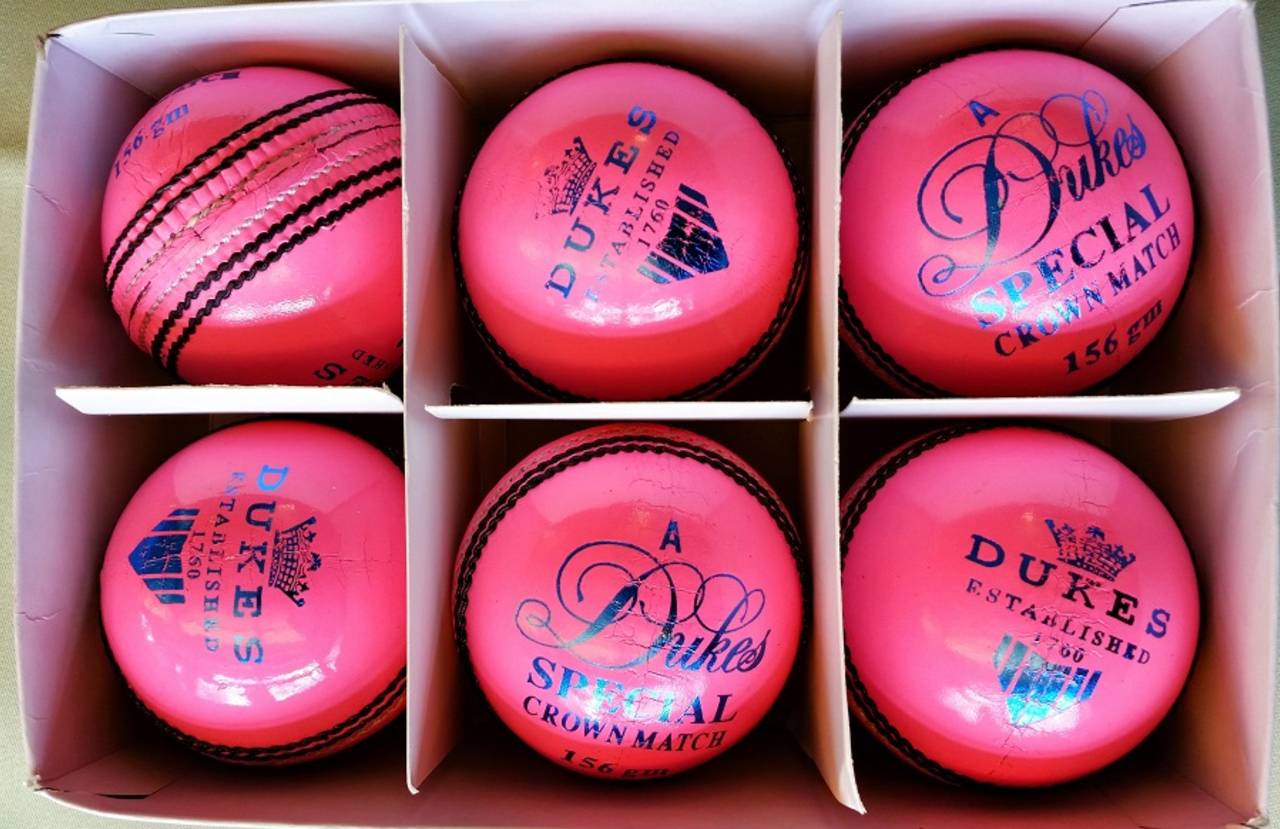Cricket in its traditional form was and is primarily played with red leather balls. Cricket balls through the ages were red because the ball manufacturers in 18th-century England preferred red dyes. The use of red balls carried on for generations until the advent of day-night limited-overs games, for which white balls were introduced.
A women's international game between England and Australia, as part of a Pink Sunday programme in support of a breast cancer campaign, happened to be the first time
pink balls were used in international cricket. In the last six years, there has been a first-class match between
Durham and MCC played under lights in Abu Dhabi, a first-class match in the Caribbean and recently
Cricket Australia has been at the forefront in experimenting with the combination of pink balls, white clothing and day-night first-class cricket. It even had trials with the broadcaster last year and it is likely that international cricket would witness another revolution - the first day-night Test.
Cricket Switzerland too has embraced pink-ball cricket starting from the 2015 season. Switzerland doesn't have the luxury of cricket-only grounds with sightscreens, and the background can often be white buildings, red-brick housing, mountains or forests, which are green in the summer, and brown or red in spring and autumn.
This background makes it difficult for batsmen and fielders to spot the red ball. The white alternative is better, but still not ideal as the infrastructure at public schools and sports complexes are often white or grey, which means that the white ball may not stand out. Also, the white ball tends to be of a lower quality compared to the red, and thereby quickly loses its shine and colour - it turns grey - on the rough, artificial surfaces in Switzerland.
Once Switzerland got over the jokes about using pink balls, the trials, which lasted for over a year, showed the technical advantages of using the pink ball. Led by the Cricket Switzerland president and ably supported by clubs and other committee members, the idea of pink balls and its experimentation went ahead smoothly.
The pink ball swings like the red ball and the one used, manufactured by Duke, retains its shine and shape longer than the white ball. Batsmen and fielders see it better, spectators find it easier to follow and ageing umpires also find it easier to judge.
Cricket Switzerland believes in maintaining the traditional aspect of the sport, such as playing in whites. However, for practical purposes, like in this case turning to pink balls, it is simply a case of discovering a winning formula.
